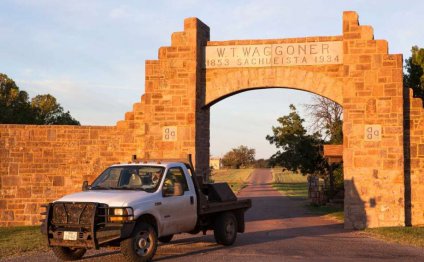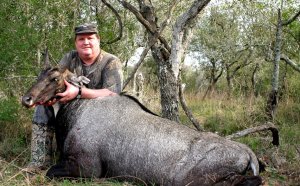
King Ranch Texas size
 By the end of the war between the states, King Ranch had grown to 146, 000 acres – supporting thousands of head of cattle.
By the end of the war between the states, King Ranch had grown to 146, 000 acres – supporting thousands of head of cattle.
Getting these cattle to advertise ended up being a proper challenge, however, as someone thousand miles of dangerous backwoods stretched out between Captain King’s cattle together with midwestern railheads in which they may be offered.
Captain King’s domesticated longhorns were a number of the 1st hoof stock to comprise the early northward Tx cattle drives. Surrounding this time, Captain King licensed a brand which includes since taken in mythic relevance in the taming regarding the western – the famous “Running W”.
Richard King’s sense of adventure ended up being rivaled only by his sight and capacity to seize on home based business options. As well as tirelessly working to enhance the farm, he dedicated to building railroads, packinghouses, ice flowers and harbor improvements when it comes to interface of Corpus Christi. He was thinking about creating the infrastructure that would get their product to market in most efficient method feasible.
Certainly one of Captain King’s key efforts to his ranch’s improvement had been the outworking of his sight to improve his cattle and horse stock through an aggressive, thorough and studied upbreeding (type improvement) system. In the shape of this program, King began to transform the hardscrabble longhorns and wild horses of their places in to the finest cattle and ponies in Tx. Medical upbreeding programs have been hallmarks of King Ranch since its inception, and they have repaid in spades. The upshot of just one these types of system within the many years after King’s demise would be the growth of the Santa Gertrudis strain of cattle – the first officially recognized new breed of meat cattle in the us.
The upshot of just one these types of system within the many years after King’s demise would be the growth of the Santa Gertrudis strain of cattle – the first officially recognized new breed of meat cattle in the us.
Other upbreeding programs led to the introduction of the country’s top one-fourth horses many of America’s noticably thoroughbreds – including 1946 Triple Crown champion ASSAULT. Twenty-first century King Ranch preserves the custom of meticulous upbreeding which have distinguished the farm through numerous generations. The purchase of bulls and seed stock are very important the different parts of the ranch’s contemporary business.
 The child who started as an impoverished, indentured jeweler’s apprentice became and adventuresome, hard working and visionary businessman who, once of their demise in 1885, had made their indelible mark-on the landscape and taken his location as a titan one of the ranks of the tamers for the Tx range.
The child who started as an impoverished, indentured jeweler’s apprentice became and adventuresome, hard working and visionary businessman who, once of their demise in 1885, had made their indelible mark-on the landscape and taken his location as a titan one of the ranks of the tamers for the Tx range.
Rebuffing adversity and taking advantage of opportunities when he saw all of them, Richard King, together with his essential Kineños, tamed the land and revolutionized the ranching business. By the time of their demise in 1885, Richard King had created a legacy that would become known, far and wide, as the birthplace of United states ranching. The son whom began as an impoverished, indentured jeweler’s apprentice became an adventuresome, hard working and visionary businessman which, once of their death in 1885, had made his indelible mark on the landscape and taken his location as a titan among the list of ranks associated with the tamers regarding the Tx range.
Consolidation and business
During some appropriate procedures in Corpus Christi in 1881, Captain King had been so impressed utilizing the opposing advice that he desired him down after issues were settled. This youthful lawyer would shortly be handling the lion’s share regarding the great rancher’s legal work. Their interest would additionally light on a lovely dude inside King family – the captain’s youngest daughter, Alice Gertrudis King. That young lawyer’s name was Robert Justus Kleberg, in which he married Alice in 1886, during the year after Captain King’s death in 1885.
 Robert Kleberg worked with Henrietta King, Captain King’s widow, to help develop and combine King Ranch. At innovations which is why he was accountable on the ranch, maybe most important one of them had been their attempts to drill for artesian water. These efforts repaid as Mr. Kleberg introduced a gusher of a water well in 1899, and another and another – discovering a river of liquid operating underneath the drought-prone rangelands. This advancement had been a welcome end to 10 years that started with a drought so serious it was referred to as “the great die-up.”
Robert Kleberg worked with Henrietta King, Captain King’s widow, to help develop and combine King Ranch. At innovations which is why he was accountable on the ranch, maybe most important one of them had been their attempts to drill for artesian water. These efforts repaid as Mr. Kleberg introduced a gusher of a water well in 1899, and another and another – discovering a river of liquid operating underneath the drought-prone rangelands. This advancement had been a welcome end to 10 years that started with a drought so serious it was referred to as “the great die-up.”
The Tx Fever Tick developed considerable issues when it comes to advertising and marketing of cattle from Southern Tx. Robert J. Kleberg created the first cattle dipping vats to fight the tick.
Robert J. Kleberg oversaw the building of cross fences that divided the vast acres into managed pastures. He established a concerted program to speed up the type enhancement of horses and cattle on the ranch. He imported top equine stock and led attempts to develop a breed of cattle that may endure the hot, harsh South Tx environment. He also started an aggressive mesquite-clearing program on farm.
The Texas Fever Tick created significant problems when it comes to advertising of cattle from Southern Tx. Robert J. Kleberg created the first cattle dipping vats to battle the tick. Besides many of these accomplishments, Mr. Kleberg built a facility which was, for a while, the biggest cattle railway operation in the field.
Share this Post
Related posts
King Ranch Texas Hunting
King Ranch could be the leading searching destination for whitetail deer, nilgai, turkey, feral hog, javelina, also online…
Read MoreKing Ranch Texas Map
Your journey begins in the historical Santa Gertrudis Creek where Captain King very first camped in 1852. Come see King Ranch…
Read More










